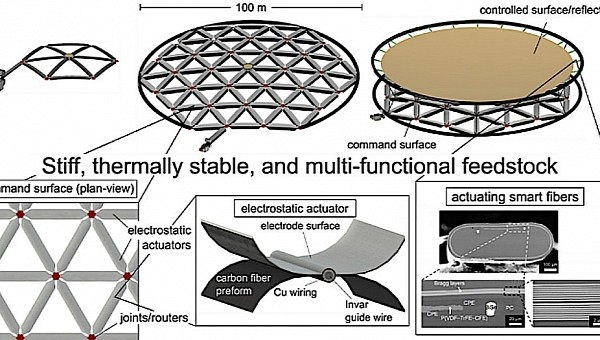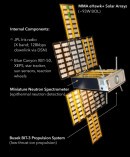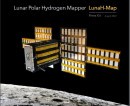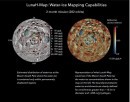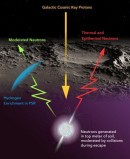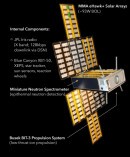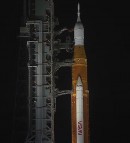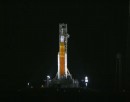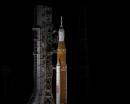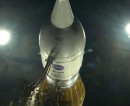If looked at superficially, our civilization could appear to the untrained eye as one about ready to start expanding into its own solar system. But if you really think about it, what did we really accomplish during our space races? We littered the space around our planet with hardware and touched the surface of the Moon, which is right next door by cosmic standards, a few times. And that’s it.
So, we’re not ready to really head out and colonize the solar system, and that is simply because we lack the tech to do so. Sure, we have satellites, spaceships, and space stations, and we’re planning even more, but as long as most of the hardware we use for space exploration needs to be put together here on Earth, there will be uncomfortable limits to everything we do.
In recent years, some started pushing for in-space manufacturing of exploration tools, from space stations to ships. Freed from the restrictions of gravity and the size of current rockets and transport modules, we’ll have all the liberty we want to get creative and really build the tools that will spread mankind among the planets and stars.
Earlier this month, NASA awarded the Phase I grants for its yearly Innovative Advanced Concepts (NIAC) program. Several of the 14 winning projects have to do with in-space manufacturing, including the one we’re here to discuss today, the so-called Bend-Forming of Large Electrostatically Actuated Space Structures.
The complicated name hides a project by MIT’s Zachary Cordero intended to create “high-performance reflectors” with dimensions greater than 100 meters (328 feet).
Reflectors are nothing more than structures meant to reflect solar light. They can be used for anything from communications to solar sails and from satellites to other kinds of power generation, but current designs can’t be larger than a few tens of meters because of the constraints of Earth-based launches: these things are sent up complete, but packed inside their transporters, and unfold one they reach the target orbit.
Cordero’s method, called Bend-Forming, was not completely detailed to the public, but we are told it allows for the in-orbit creation of so-called smart structures that can have virtually any combination of size, mass, and stiffness. That means they can move away from the traditional design of space structures that includes the use of traditional trusses and “tension-aligned” components.
Applying this method would create space structure with each of the lightweight trusses also acts as an actuator that can be engaged when needed, kind of turning a standard space structure into a shape-shifting one.
It’s unclear how much of the $175,000 NIAC grants went to Cordero’s idea, but the scientist says there are plans in place to use the method to make a microwave radiometry reflector and place it in geostationary orbit. From there, it should keep an eye out for atmospheric temperature profiles and map the internal structures of tropical cyclones.
No date as to when the project should be ready was announced, but if successful the project’s lead believes such tech “will lead to significant improvements in storm forecasts as well as improved understanding of atmospheric processes related to the hydrologic cycle.”
In recent years, some started pushing for in-space manufacturing of exploration tools, from space stations to ships. Freed from the restrictions of gravity and the size of current rockets and transport modules, we’ll have all the liberty we want to get creative and really build the tools that will spread mankind among the planets and stars.
Earlier this month, NASA awarded the Phase I grants for its yearly Innovative Advanced Concepts (NIAC) program. Several of the 14 winning projects have to do with in-space manufacturing, including the one we’re here to discuss today, the so-called Bend-Forming of Large Electrostatically Actuated Space Structures.
The complicated name hides a project by MIT’s Zachary Cordero intended to create “high-performance reflectors” with dimensions greater than 100 meters (328 feet).
Reflectors are nothing more than structures meant to reflect solar light. They can be used for anything from communications to solar sails and from satellites to other kinds of power generation, but current designs can’t be larger than a few tens of meters because of the constraints of Earth-based launches: these things are sent up complete, but packed inside their transporters, and unfold one they reach the target orbit.
Cordero’s method, called Bend-Forming, was not completely detailed to the public, but we are told it allows for the in-orbit creation of so-called smart structures that can have virtually any combination of size, mass, and stiffness. That means they can move away from the traditional design of space structures that includes the use of traditional trusses and “tension-aligned” components.
Applying this method would create space structure with each of the lightweight trusses also acts as an actuator that can be engaged when needed, kind of turning a standard space structure into a shape-shifting one.
It’s unclear how much of the $175,000 NIAC grants went to Cordero’s idea, but the scientist says there are plans in place to use the method to make a microwave radiometry reflector and place it in geostationary orbit. From there, it should keep an eye out for atmospheric temperature profiles and map the internal structures of tropical cyclones.
No date as to when the project should be ready was announced, but if successful the project’s lead believes such tech “will lead to significant improvements in storm forecasts as well as improved understanding of atmospheric processes related to the hydrologic cycle.”
